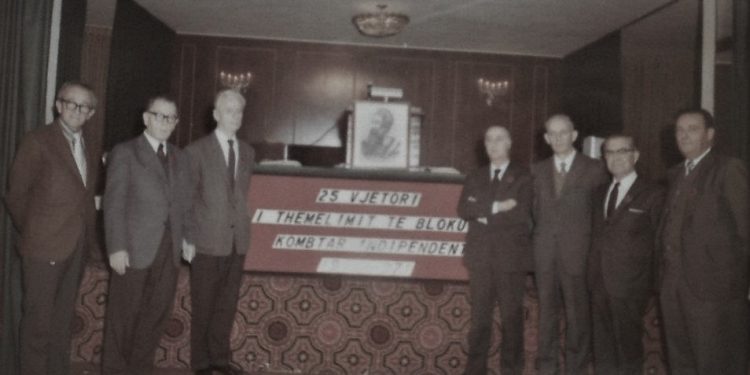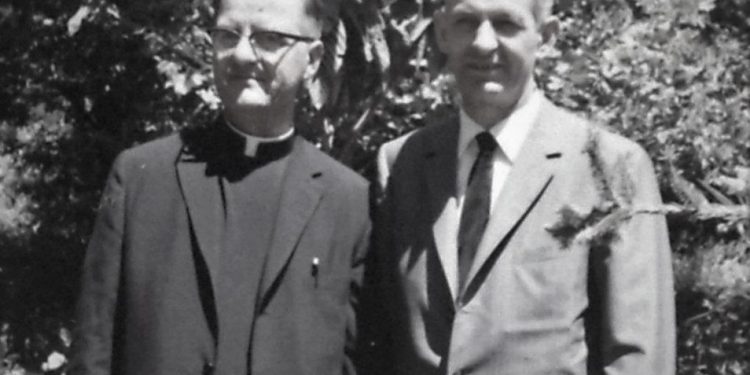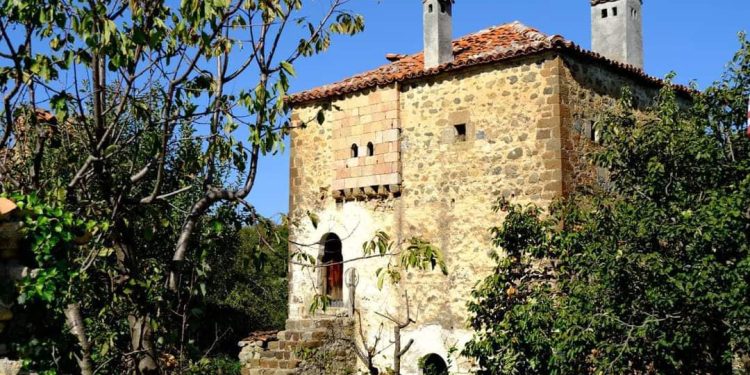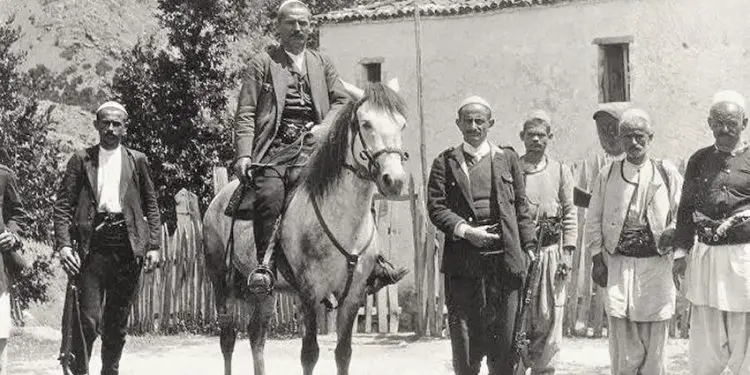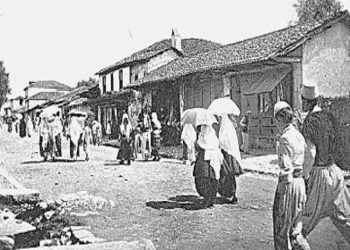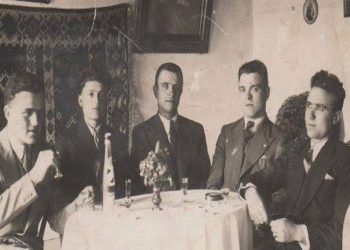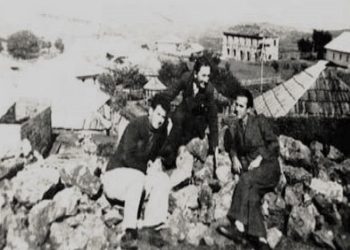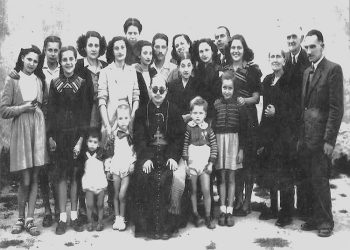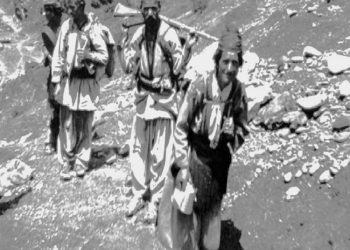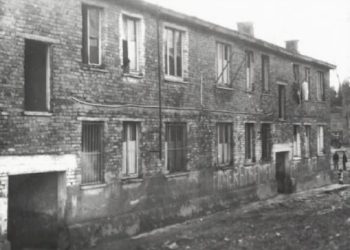By Tomë MRIJAJ
Part One
Memorie.al / Throughout my life in my hometown and New York, I have been concerned about the early origins of the displacements or migrations of my ancestors from Mirdita and their settlement in the western part of Kosovo. Thus, over the centuries of history, we have the concentration of Catholic residents in Kosovo with origins not too far from Mirdita, who are called Fanda. Foreign travelers, chroniclers, educated Catholic clergy, Albanologists, scholars and learned diplomats of the time will write about these newcomers of the same nationality, language, customs and traditions, but separated for economic reasons or blood feuds.
One of the authors who treats the residents of Fanda as real characters is the genius of Mirdita origin, the “national poet” Father Gjergj Fishta (1870-1940). The poet dedicates some verses to the famous inhabitants of Fanda, in the well-known masterpiece “The Lullaby of Malcis”.
Mirdita, over the past centuries, has produced prominent men who, with their glorious lives and works, have left indelible marks on Albanian history and mostly in Northern Albania.
People have often been interested in learning more about the interesting history of the Great Gate of Gjomark, well-known as the “Gate of the Kapidan of Mirdita”, from its origins (15th century) to the present day, based on historical data, popular tradition and the rich literature of today.
The Kapidani Gate of Mirdita, with the will of the people, has led Mirdita, with wisdom, prudence, politics and a normal life for the Albanian community, with worthy manly behavior and great courage in defending the interests of the people, working with dedication for the unification of tribes, brotherhood and mutual cooperation of families, encouraging and supporting national ideals, against foreign invaders, who over the centuries have trampled Albanian lands.
On this positive path, for the good of the vast province of Mirdita, the Kapidani Gate has led since the 15th century. Gjomark I, invited by the people to lead them as their leader, openly and democratically declared to Mirdita: “If you accept me as your leader, I and my descendants will rule and lead the people of Mirdita without any right to tithes, taxes, fines, stipends, etc., but only on the basis of canon law and we will respect the family right of private property determined by stones and boundaries. I also promise you that I will suffer, sacrifice, be burned, fight and die for Mirdita and together with the Mirditas” (p. 60).
Over the years, I have always been troubled by a series of enigmatic questions, such as what is the origin of the Principality or the Gate of Gjomark, do they have any connection with the Gate of the Dukagjins, since the glorious period of Gjergj Kastrioti during the time of Arber, how is their geographical spread, what is the progress of the resistance against the Ottoman High Porte during the centuries of Turkish rule in Arber, the life and rule of the Kanun of the Kreshnik mountains, why were these codes respected mostly in Northern Albania, the successive wars that the Mirdita people have waged to preserve their Autonomy, the titanic war against communism and its servants, the organization of armed resistance in the mountains of Northern Albania, the rich patriotic activity of the Kapidan of Mirdita in the European diaspora, the activity of the Kapidan of Mirdita Ndue Gjon Marku and the leadership of the “Independent Bloc”, in the USA, etc., etc.?!
These questions and many others, which belong to the last six centuries of the second millennium (20th century), are objectively answered by the sharp jurist, activist and tireless Albanian patriot, the Captain of Mirdita, Ndue Gjon Marku, through his biographical book entitled: “Mirdita, Dera e Gjomarkut, Kanuni”, published in New York in 2002.
With Pali and then with Lekë Dukagjini, the line of sons continues, which begins with the son Gjon Mark Kolë Pali (Marku i primo) with whom the well-known Dera e Gjomarkut was carried and takes the name. Thus, the sons become the trunk, the honor and the heart of Mirdita. The family tree of the Principality of Mirdita as the Gate of Gjomarkajve or the Captain of Mirdita, continues with Marka Gjoni I, who is the son of Gjon Marku II, killed by the Turks, leaving room for the first generation of descendants that begins with Preng Lleshi I.
Then come Dodë Prenga, Bibë Doda. In addition to the latter who has left heirs, the Principality of Mirdita – give direction and development to the tree of the Gate of Gjomark. And then follows the generation of males who come from the IInd and IIIrd generations, preserving and inheriting the noble honor and good name of the Gate of Gjomark or the Captain of Mirdita generation after generation.
Respect and authority are inherited and conveyed with gratitude by all the indigenous inhabitants of Mirdita, the echo of the fame of the Principality of Mirdita is enriched with experience and glorious history, which is preserved and deeply recorded in the memory of the history of the province with multifaceted merits of manhood, bravery, generosity, loyalty, nourished by the ancient tradition of the Kanun of the Mountains of Lekë Dukagjini.
Seen in the plan of original survival with all the elements of pure preservation of the authentic Albanian tradition, this Dynasty has been able to survive the wild storm of the barbaric Turkish, Serbo-Montenegrin invaders and the anti-Albanian and atheist communist regime.
Various authors, such as: Albanologists, foreign travelers and visitors, French, Italians, English, Austrians, Hungarians, Serbs, Montenegrins, Greeks, Macedonians, Croats, Slovenes, etc., have mentioned in the pages of history, leaving written travel descriptions, reports sent to the Vatican, meetings with Mirdita residents, the histories of the dioceses and the life and pastoral activity of the devout spiritual leaders of the Catholic Church, the history and tradition of the Principality of Mirdita.
– Gjomarkaj Gate – Kapidani, the economic-social relations and cultural and customary bridges of the province with other sisters within the territory of Arber, the mechanical movements of the population towards new residential centers and the migrations towards more fertile and suitable areas for the agricultural, livestock and handicraft economy, which have been practiced as a tradition in all Albanian provinces, etc.
If we were to quote some of the most famous authors of the time, we could add that the very significant notes and assessments written by the well-known French Albanologist Amy Bue at the time remained very important, who in the work “La Turque d’Europa” (Paris, 1880), among other things, says that the province has worthy representatives who are known and respected by everyone and that it is the well-known Door of the Mirdita Kapedan Dynasty.
The principality has enjoyed and enjoys respect and authority, since it meticulously uses the sources of local tradition that is based on the laws known among generations of the Kanun of Lekë Dukagjini, which regulates the internal life of the inhabitants with an extension throughout Northern Albania and up to Kosovo.
The priest who knew Albanian customs and traditions and the life of Kapidan very well was Don Stefano Gaspari, an Albanian Catholic priest, sent by the Vatican (Holy See) to Albania in 1671, where in his notes he describes in detail the miserable condition of the Catholic clergy in the province.
The cleric, among other things, also mentioned the five-point agreement signed between the invading Turkish Empire and the representative of the Principality of Mirdita, the worthy sucker of the Door of Gjomark – Kapidan John Mark I. According to many archival sources researched to our days, it appears that the agreement in question has remained in force for nearly 3 centuries, faithfully respecting every important point of it.
While later the historian Freng Poqeville (albanologist), Consul of Napoleon I in Ioannina (1806 – 1816) mentions for the first time that: “Mirdita in the year 1550 chose the princely dynasty in the person of John Mark I…”, which arrived 82 years after the death of the national hero George Kastrioti.
Historically, the Door of Gjomark, was able to handle with rare skill everything that was with the traditional law of the Kanun, where it ensured peace, unity, brotherhood and the admirable level of understanding of the people of Mirdita. Even another albanologist Dometrio Camarda, in his work entitled: “Gramatologia Comparata” (1866), writes that the highlanders remained united in the face of the Ottoman invasion, always respecting the Prince of Mirdita with headquarters in Orosh, never lowering the Flag and the Religion of the ancestors.
The Gjomarkaj have been very careful and meticulous in all the marriages they have made, never marrying the three chieftains of the tribe, who were always considered brothers, such as: Orosh, Spaç and Kushne, creating a dynasty in the purity of blood and strengthening and expanding its great influence and prestige even more in other regions of Northern Albania.
Mirdita and the Principality of the Gate of Gjomark was the vanguard of the resistance against the Turkish High Porte at that time, a path that Dukagjini and Kelmendi also followed in the Greater Highlands, as an unquenchable light in the good of national rights. It was prepared for new challenges. The Gate of the Kapidan of Mirdita had a strong military force consisting of over 1500 very capable and loyal warriors of the Kanun and the Gate they represented, responding to every call with weapons in hand.
Respect for Kapidani has always been expressed in men’s assemblies, Albanian delegations on various social and national issues, or when the issue of the mountain chieftainship in Northern Albania was at stake. Among the many personalities who have left a good name in the history of the Albanian people are also well-known figures of patriotism, such as the brave mountaineer Dedë Gjo’ Luli, etc.
A classic example of loyalty to the Principality of Mirdita – Dera e Gjomarku – Kapidani, has remained a glorious and important history engraved in the unforgettable figure of Lleshi i Zi, a devoted sucker of the Dera e Gjomarku Dynasty. His bravery is most distinguished in the acute patriotic plan. From historical sources and through the work of the Kapidani of Mirdita Ndue Gjon Marku, entitled: “Mirdita Dera e Gjomarkut, Kanuni” (New York, 2002), we learn, among other things, that it was the time when Turkey demanded that all Mirdita fighters, who had actively participated with weapons in hand and patriotic conscience in the War of the Fortress (Rozafa) of Shkodra, surrender or otherwise it would begin physical punishment with military expeditions throughout the region, killing, burning houses, according to the permanent custom as an invader for centuries.
However, Lleshi i Zi, thanks to his inherited intelligence, understood the cunning action of the Bosphorus turbans, who were threatening Mirdita from moment to moment, therefore he notified Istanbul that: “the responsibility was his, that only he (Lleshi i Zi) had to surrender, on condition that Mirdita was not touched”.
On the other hand, the Ottoman Empire did not know Lleshi i Zi well, his name and great manhood. Turkey, surprised by the bravery and responsibility to take upon itself the entire heavy burden of sacrifice, up to the sacrifice that Lleshi i Zi was making, accepted the conditions, put Lleshi i Zi in chains and imprisoned him for 9 years in prison and known suggestions of Ioannina.
Appreciated today after many centuries, Mirdita is very grateful to history for her ardent son for the gesture of sacrifice that he undertook, where with unparalleled manhood he sacrificed himself on behalf of the entire province, which he loved like the apple of his eye. But on the other hand, the Almighty God, with His miracle, carefully preserved the Captain of Mirdita and the historical testimony for generations to come as a positive example.
After many ordeals and vicissitudes that he had to go through in the cold Anatolian prisons, Lleshi i Zi returned from exile. A disaster had struck the Principality of Gjomark. The murder of his three sons by his own nephew (his brother’s son), directly incited by the evils of the Turkish invaders, through the policy of “divide and rule”, weakened his heart at the loss of his sons, but did not overcome the hatred towards the invaders who not only exiled him, but also brought murder into his blood.
This act severely hurt Mirdita and Lleshi i Zi, whom Turkey released from prison, to “reconcile” the bloods from whose conflicts 22 people had been killed, from two neighborhoods alone. This remains the greatest tragedy of the terrible blood feud in Gjomark, caused by the wiles of the Turkish invaders. In this way, the conqueror was able to be more involved in all the intrigues he was cooking himself, to weaken and pervert as much as possible the most influential Gate of the Kapidan of Mirdita in Orosh.
The policy of contrived intrigues played with a very well-prepared scenario, had been able to penetrate and cause serious wounds to the Great Gate of the Principality in question. Despite all this misfortune, during the reign of Llesh the Black, he was able to re-heal the deep wounds, expand and spread the name, respect and prestige of the Gate of Gjomark and to people with influence in Northern and Southern Albania. Such was Ali Pasha Tepelena. Memorie.al
Continued in the next issue




